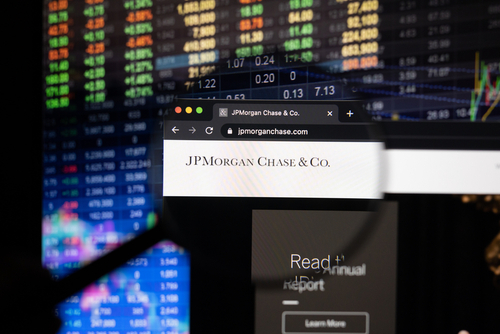Note from Senior Managing Editor Christina Grieves: In today’s article – as he usually does – Nicholas Vardy provides valuable insights for investors looking to capitalize on the latest market moves. And if you’re interested in hearing even more of his excellent strategies – in person – make sure you check out Nicholas’ upcoming Wealth, Wine & Wander Retreat from August 28 through September 5.
This unforgettable adventure through Paris, Normandy and Amsterdam is the perfect opportunity to stretch your legs as the world reopens. You’ll enjoy extraordinary experiences and culinary delights, learn exclusive investment techniques that you won’t find anywhere else, and mingle with a small group of like-minded travelers.
Available spots for this unique journey are extremely limited, so I recommend that you secure yours as soon as possible to ensure that you don’t miss out on the trip of a lifetime! Simply reach out to Maggie Stephens at 800.638.7640, ext. 125, or Maggie@aesu.com to learn more and register.
Share buybacks are hot.
Many U.S. blue chip companies are generating record profits.
That’s a sharp reversal from 2020, when companies hoarded cash to stave off a liquidity crisis in the early days of the COVID-19 pandemic.
Commenting on a $30 billion share repurchase plan unveiled late last year, JPMorgan Chase (NYSE: JPM) CEO Jamie Dimon told investors last month, “We’re buying back stock because our cup runneth over.”
The bank is hardly alone.
Flush with cash, some Silicon Valley tech giants have announced even larger buyback programs.
In April, Apple (Nasdaq: AAPL) authorized a $90 billion expansion of its buyback program – triple the size of JPMorgan’s commitment.
Alphabet (Nasdaq: GOOGL) has also chimed in with a $50 billion buyback program of its own.
A Cornucopia of Money
U.S. blue chips have more money than they know what to do with.
According to S&P Dow Jones Indices, cash holdings among S&P 500 companies reached $1.9 trillion at the end of last year.
That was an all-time high – and a 25% increase from the cash holdings at the end of 2019.
What to do with all this excess cash?
Return some of it to shareholders, of course, by either raising dividends or buying back shares.
Goldman Sachs (NYSE: GS) predicted nothing short of a “buyback bonanza,” projecting share buybacks by U.S. companies this year will soar 35% higher than the 2020 level.
According to Goldman, U.S. companies have authorized $504 billion in share repurchases just through May 7. That’s the highest level for that period in more than two decades.
RBC Capital Markets analyzed the first quarter earnings transcripts of nearly 300 companies. The words “buyback” and “dividends” were mentioned roughly three times more often than “capital investments.”
The Logic of Buybacks
Most investors are familiar with dividends. Fewer are familiar with share buybacks.
Like dividends, share buybacks can be an attractive way to return capital to shareholders.
When a company announces that it will buy back its own shares, it means a couple of things…
First, the company is healthy and has sufficient cash on its balance sheet to buy back its shares.
Second, the company is focused on maximizing returns to its shareholders.
By reducing the number of shares outstanding, management increases a company’s earnings per share.
And it does this without needing to wring out more operational efficiencies from the business.
Why don’t companies just raise their dividends and pay out their shareholders directly?
Share buybacks are a more tax-efficient way to return capital to shareholders.
Dividend payments to investors are immediately taxable. In contrast, share buybacks are not a taxable event.
And unlike dividend payments, buyback programs can be easily increased or halted in reaction to changing circumstances.
How Buybacks Support the Market
Share buybacks help support the overall stock market because companies themselves become a key driver of demand for stocks.
Many analysts believe that share buybacks helped keep intact the 11-year bull market that ended with the coronavirus crash.
Between 2010 and 2019, S&P 500 companies spent nearly $5.3 trillion on share buybacks.
That makes today’s buyback boom a bullish sign for certain stocks.
So far in 2021, companies that have spent money on buybacks have fared better than the broader market.
The S&P 500 Buyback Index is up 21% year to date, outperforming the S&P 500 by roughly 10%.
Profit From the Buyback Bonanza
So how can investors get in on the action?
On one hand, you could buy the stocks of the companies that are currently running buyback programs.
On the other hand, you could just buy an exchange-traded fund (ETF) like the Invesco Buyback Achievers ETF (Nasdaq: PKW).

The ETF tracks the Nasdaq US Buyback Achievers Index, made up of companies that have reduced their number of shares outstanding by 5% or more in the past 12 months.
The index’s holdings boast an average market cap of more than $45 billion, so many of the companies’ names are familiar to U.S. investors.
Allstate (NYSE: ALL), Ameriprise Financial (NYSE: AMP), Synchrony Financial (NYSE: SYF), Loews Corporation (NYSE: L) and Equitable Holdings (NYSE: EQH) are the five largest holdings in the fund.
So if you want to profit from the buyback bonanza of 2021, take a look at the Invesco Buyback Achievers ETF.
Good investing,
Nicholas
Click here to watch Nicholas’ latest video update.
For the latest news from Nicholas, connect on Facebook and Twitter.

